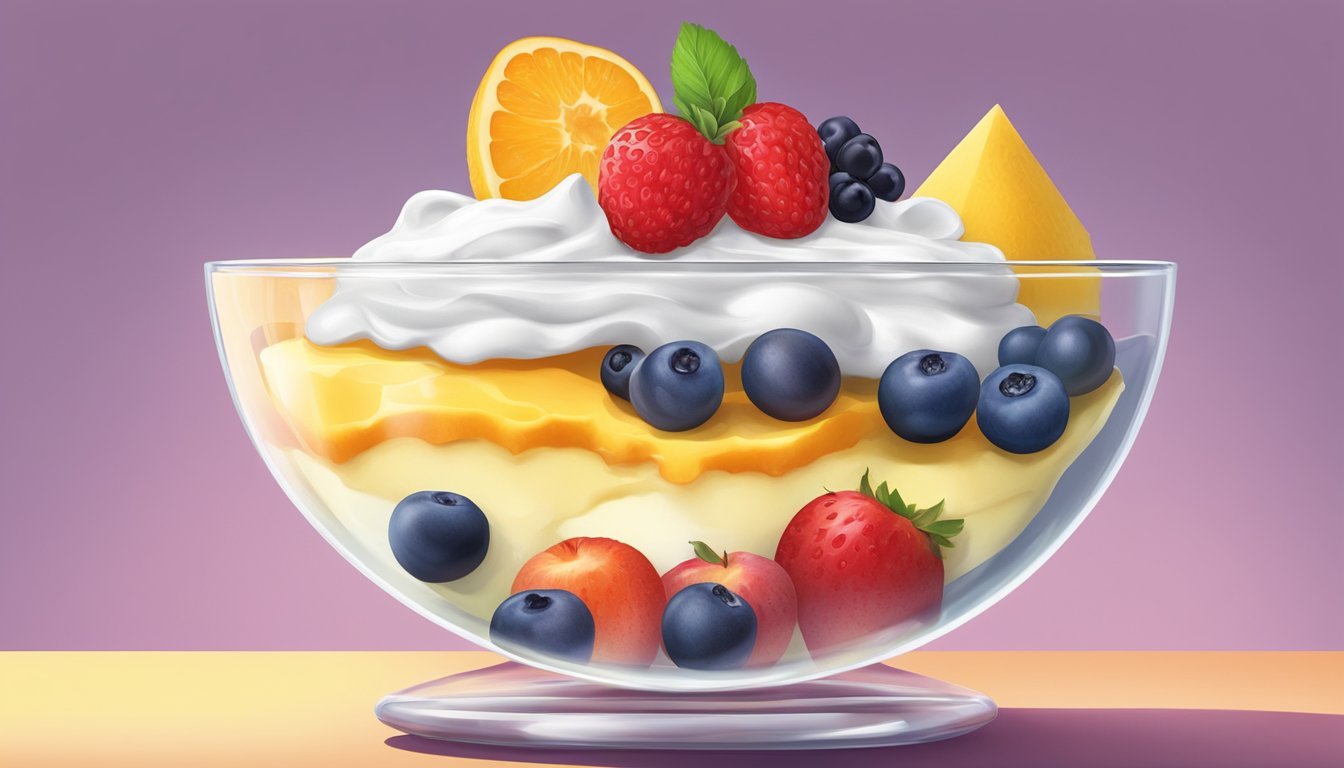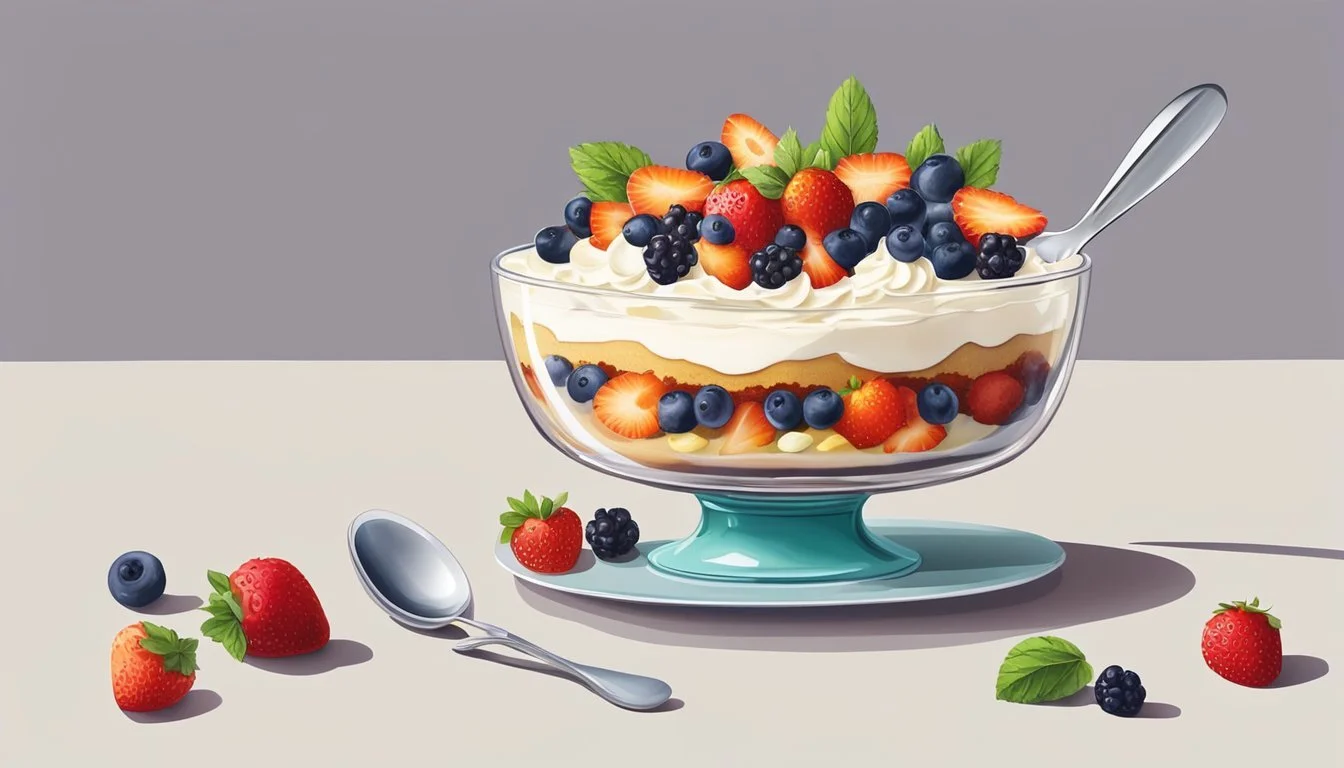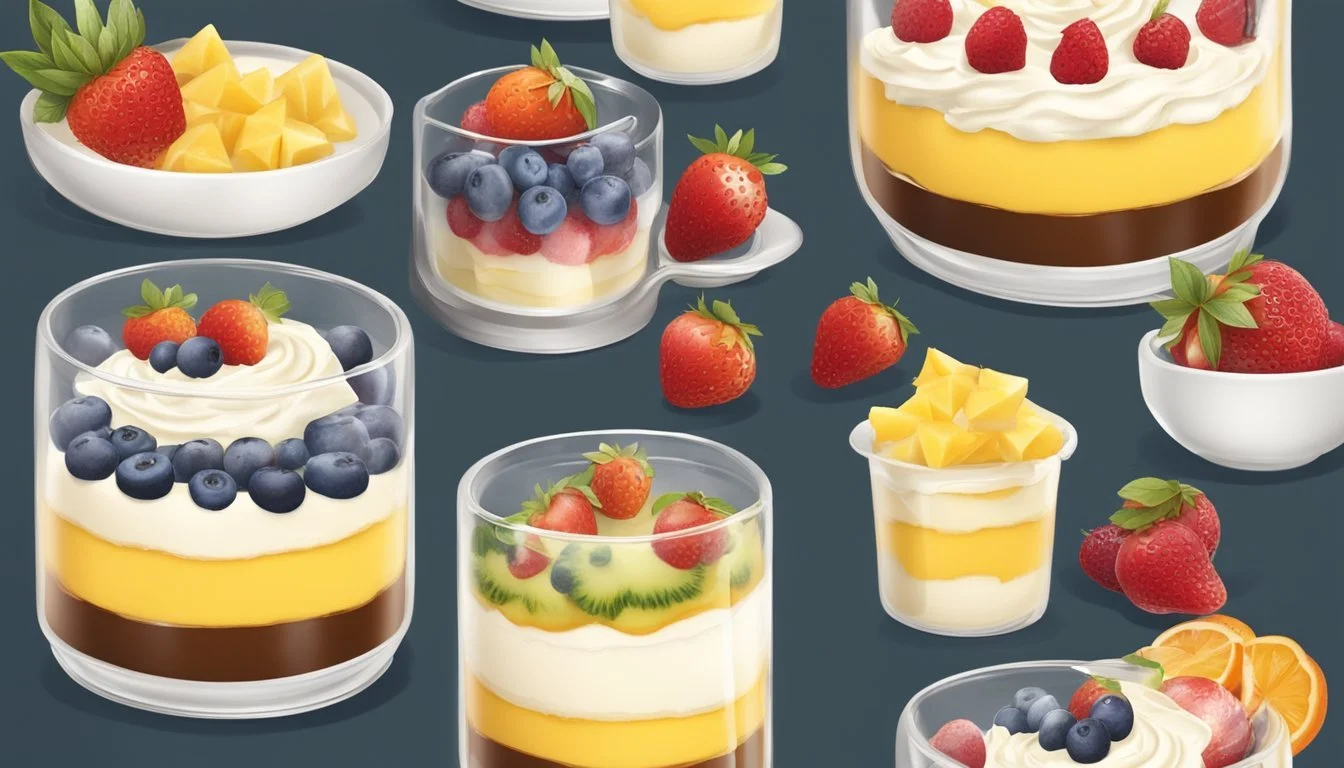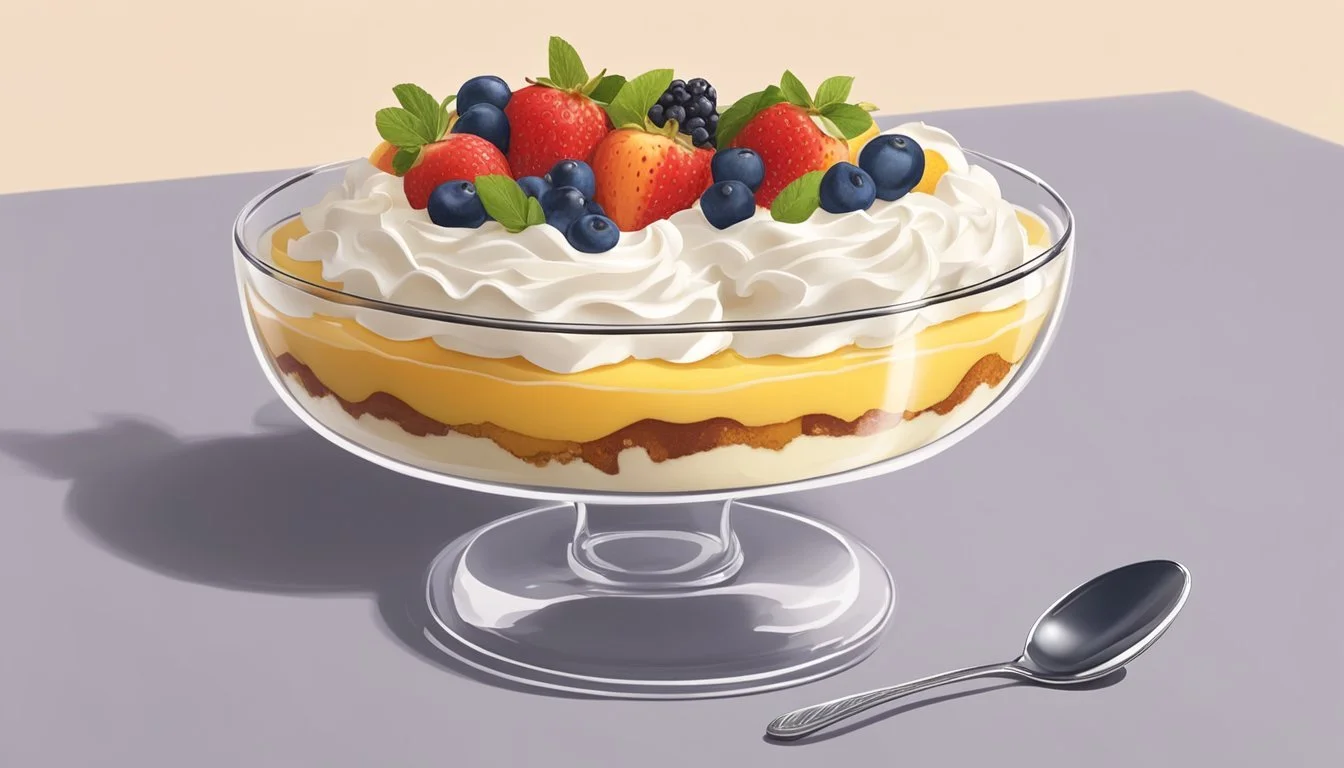How do you eat a trifle?
A Step-by-Step Guide to Enjoying This Layered Dessert
Eating a trifle is a delightful experience that involves indulging in a dessert (What wine goes well with desserts?) known for its layers of flavor and texture. A trifle is a dessert that typically consists of sponge cake soaked in sherry or another fortified wine, layered with fruit, custard, and cream. While it may appear complex, the manner of enjoying a trifle respects the intricacy of its construction, ensuring each spoonful includes all the layered elements.
Traditional English trifle is a cherished dessert, especially around Christmas, revered not just for its taste but also for its festive presentation. It mirrors the culinary history of England, where it has evolved into a quintessential British dessert. To honor the craftsmanship that goes into creating a trifle, it is served by scooping vertically, taking care to preserve the layers in each serving.
When eating trifle, the blend of flavors from the alcohol-infused cake, the tang or sweetness of the fruit, and the richness of the custard and cream, create a harmonious balance that defines this classic dessert. It is a celebratory dish that has maintained its popularity through the centuries, captivating palates with its varied textures and depth of taste.
Understanding Trifle
Trifles embody the essence of British dessert tradition, offering a layered feast of textures and flavors that have delighted diners for centuries.
Historical Background
The trifle is a quintessential British dessert that is believed to have gained prominence in England in the 18th century. This sweet treat was especially favored as a festive Christmas trifle and also enjoyed on other occasions. It has withstood the test of time and continues to be a cherished part of dessert cuisine across the UK and beyond.
What Makes a Trifle?
A traditional trifle consists of several distinct layers, each playing a pivotal role in the overall experience.
Sponge Cake: Alcohol-soaked sponge cake or ladyfingers provide the foundation.
Fruit Layer: Typically, seasonal fruits are chosen for their ability to impart juice and flavor.
Custard: Creamy custard adds richness to the dessert.
Jelly: Homemade jelly introduces a gelatinous texture contrasting with the other components.
Whipped Cream: Finally, a generous topping of whipped cream crowns the trifle.
The construction of a classic trifle is carefully considered to ensure a harmonious balance of sweetness, tartness, and a mélange of textures.
Essential Ingredients
Preparing a trifle involves layering various elements to create a harmonious blend of flavors and textures. Here's a breakdown of the pivotal components that form the foundation of this classic dessert.
Custard
Custard serves as the creamy, rich backbone of a trifle. Vanilla custard is traditional, offering a smooth, velvet-like layer that complements the other ingredients. For convenience, one can use either store-bought varieties or make a homemade version using custard powder for a more authentic taste.
Cake Base
The cake base provides a spongey contrast to the creamy layers. Sponge cake, pound cake, or ladyfingers (sponge fingers) are popular choices. They are typically cut into slices or cubes to fit the serving dish and absorb the other flavors well.
Fruit and Jelly
Fruit adds a juicy burst of flavor to a trifle, with classic options including strawberries, raspberries, and other fresh fruit. Layering with jelly (or jam for a twist) not only enhances the taste but also contributes to the dessert's structure.
Creamy Layers
Whipped cream is a must for adding light, airy layers that contrast with the denser elements of the trifle. It's typically sweetened with simple syrup or confectioners' sugar and flavored with vanilla to intensify the dessert's creamy flavor profile.
Alcohol and Alternatives
While not essential, alcohol such as sherry, rum, or fruit juice can be sprinkled over the cake for added moisture and depth. Non-alcoholic alternatives like simple syrup can be used for a similar effect without the liquor.
Additional Elements
A trifle may incorporate nuts for crunch or additional fruit layers like fruit syrup for extra sweetness. One can sprinkle nuts on top or between layers, and layer in sweet fruit syrup to enrich the dessert's complexity.
Preparing to Assemble
Assembling a trifle involves a few critical steps: the right bowl selection, custard consistency, fruit preparation, and the type of cake used. Each component contributes to the final dessert's presentation and taste.
Choosing the Right Bowl
A glass bowl is traditionally used for trifle due to its transparency which showcases the layers of the dessert. The size of the bowl should be chosen based on the number of servings required. Trifle bowls are preferred, but any deep glass bowl will suffice. It's important to ensure there's ample space to layer the ingredients without overfilling.
Making the Custard
Homemade custard enhances the trifle with rich flavor and creamy texture. For the custard:
Ingredients: Use egg yolks, sugar, milk, and vanilla for a basic custard.
Prep time: Allocate around 10 minutes to mix ingredients.
Cook time: It takes approximately 10-15 minutes to thicken on the stove. The custard should be chilled before layering to prevent it from soaking into the cake too quickly.
Preparing the Fruit
Use fresh fruit such as strawberries, bananas, or berries for a vibrant and juicy addition. Keep these tips in mind:
Prep: Wash and slice fruit into bite-sized pieces.
Layering: Fruit layers should be easy to serve, so ensure the cuts are uniform. Fruit not only adds flavor but also creates a visually appealing layer with contrasting colors.
Baking the Cake
The cake acts as a sponge to absorb the flavors of the custard and fruit. For an easy trifle:
Type: Opt for a sponge, pound, or Madeira cake.
Baking: Prepare the cake in advance to allow it to cool completely before assembling. Slice the cake into even pieces that fit the bowl and arrange in a single layer at the base. Homemade cakes (how long do cakes last?) offer a personal touch, but store-bought can be equally effective if short on time.
Layer by Layer Construction
Assembling a trifle involves careful layering to ensure each spoonful gives the eater a perfect blend of texture and flavor. The process from the first cake base to the final garnish is an essential component of this classic dessert.
Starting with the Base
The trifle begins
Serving and Presentation
When serving trifle, presentation is as crucial as the dessert itself, turning this treat into a visual as well as a gustatory delight. Great care should be taken to maintain the integrity of the layers, ensuring each serving is as appealing as the trifle in its entirety.
Portioning the Trifle
A trifle is traditionally assembled in a large, clear dish to showcase its vibrant layers. For serving, one should use a large spoon or spatula to slice vertically through the layers, lifting from the bottom to the top to maintain layer structure. It's important to portion the trifle carefully to ensure that each serving contains all the layers as intended in the recipe. Servings can be arranged in individual glasses or dishes to preserve the layered look for each guest.
Garnishing Your Trifle
The final step in trifle presentation is garnishment, which enhances both flavor and appeal. Depending on the type of trifle, like a chocolate trifle, one could sprinkle grated chocolate on top for an extra chocolatey bite. A sprig of mint or a strategically placed cookie can also be visually appealing. If one's recipe includes fruit, a few well-placed slices on top can signify the flavors within. When selecting garnishes, one should consider how they complement the overall flavors of the dessert and use them sparingly to avoid overshadowing the trifle itself.
Additional Tips and Tricks
Perfecting the art of eating a trifle extends beyond the basic steps of serving and enjoying this layered dessert. Savvy trifle enthusiasts embrace variations and understand the nuances of storing leftovers to maintain the dessert's delightful quality.
Recipe Variations
Trifle recipes can be as diverse as the occasions they grace, from a Christmas gathering to a summer picnic. For a festive Christmas trifle, one might decide to incorporate Christmas cake pieces or add winter spices and oranges. In contrast, a summer trifle can be a lighter affair featuring peaches or berries, and perhaps a lighter angel food cake instead of the traditional sponge. When seeking to add an adult twist, booze such as sherry or brandy can be drizzled over the cake before layering.
Traditional Trifle: Sponge cake, custard, jelly, and whipped cream.
Christmas Trifle: Christmas cake, custard with winter spices, fruity jelly, and brandy-infused whipped cream.
Summer Trifle: Angel food cake, peach slices, vanilla custard, and a light whipped cream topping.
Storage and Leftovers
Trifles are best when enjoyed fresh, but leftovers can be stored in the refrigerator. To retain the dessert's textures and prevent the layers from becoming too soggy, one should:
Refrigerate the trifle in an airtight container to keep it fresh.
Consume leftovers within two days to enjoy optimal flavor and texture.
Although trifles are typically high in calories due to their rich components, leftovers can still be a tempting treat when portioned appropriately. Always remember to include a recipe card with the trifle to assist guests in recreating the dessert and to provide information regarding calorie content, if desired.






